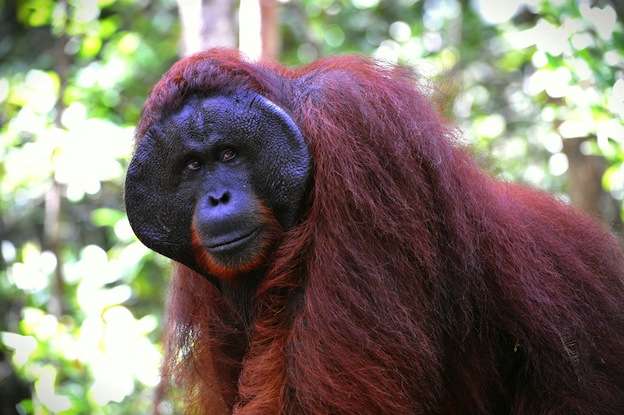Orangutan Species Overview
Few more than two million years ago orangutans were part of our Earth. They have definitely evolved plenty since then in order to survive. Researchers believe that many species of them once existed. Unfortunately only two of them have been able to successfully continue to evolve and last until now. They are the Sumatran and the Bornean. Both of them are in danger of becoming extinct in the near future though if efforts aren’t taken to save them.
While there are plenty of efforts out there, they seem to be slow in making a difference. When you are up against the poaching of them and the destruction of their natural habitat it is hard to find a solution for them. These two species of orangutans are extremely similar in their behaviors and how they survive. The main difference is where they live at. Another difference is the size as the Sumatran is smaller in overall size when full grown.
Orangutan Species
Both of them live in the trees of the rainforests where it is tropical or sub tropical. They feed on a variety of foods but mainly fruits. They also eat insects, bark, plants, leaves, and shoots. They can spend seven hours of their time eating every day. That adds up to lots of food that they need to find. Both species migrate daily about one mile. They will create two nests daily – one for when they nap and a new one when they sleep at night.
Orangutans aren’t social at all when they are adults. They may tolerate each other in a zoo setting but that isn’t usually the norm in the wild. The males are extremely territorial. They will try to get others to run off but if that doesn’t work they will fight to protect their own areas. The females are more tolerant of others but they don’t interact except with their young.
The predators of both these species of orangutans include the big cats, pythons, and humans. They spend almost all of their time in the trees to help protect them from predators. They can live about 30 to 40 years in the wild and about 50 years in captivity. They are mild in temperament but they can be aggressive if they feel threatened. Females are extremely volatile when it comes to protecting their young.

Hopefully with the education that people now have as well as conservation efforts, there will be a future for these two orangutan species. The Sumatran species are more at risk with only about 7,300 of them left in the world. The Bornean have a population from 45,000 to 56,000. Even so, they are dropping in numbers very quickly.
Both of these species have very slow reproduction rates. Mating doesn’t have a set season so it can take place at any time. However, the males aren’t mature until they are about 15 years of age and it is about 12 years of age for the females. Another problem is that the females care for their offspring so long. It can be up to 8 years so they won’t mate during that period of time.
Exploitation of these species of orangutans continues to be a huge problem. Many of them are illegally kept in all parts of the world as pets. They are very childlike and fun when they are young. Yet when they get older they can become aggressive due to the need to mate. They also consume lots of food which is expensive and need a huge enclosure. They aren’t meant to be kept as pets and educating people about that fact is very important.
